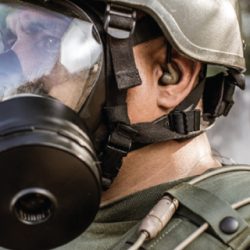


Silynx For The Industrial Professional

Ultra-ruggedized for the harshest environments. Fit, form and function directly translatable to the demanding environments of industrial operations.

Silynx has all the same hearing protection, communication, and situational awareness capabilities of earmuffs in a tiny ear bud. In-Ear headsets are lightweight, have natural airflow, and no moisture build up. There is no interference with helmets, eye wear, protective masks, respirators, or face-guards. No added boom mic weight, and no snag hazard.

Silynx headsets eliminate disruptive methods of communicating. In-Ear microphone enables 2-way communications without removing safety gear — voice is always clear to recipient of audio traffic, even inside respirator. Hands free connectivity to multiple devices, including cell phones.

Ear buds fit comfortably, transparently, under personal protective equipment enabling hands-free 2-way communication. In-Ear microphone enables clear communications inside headgear.

360 degree hear-thru technology provides full situational awareness. Hear-thru allows you to detect and identify the nature and location of hazards and danger sounds, while also enabling verbal face to face communications.
Silynx In-Ear headsets have a hearing protection rating of NRR 25. During impulse noise events the hear-thru system responds to the decibel increase, automatically and immediately compressing the noise until the decibels decrease back to safe levels.
Silynx has comfortable options for situations where hearing protection is not a requirement. The XPR single-sided (in-ear) and HSI (over-the-ear) both provide clear communications and are low-profile. See the “product Selections” section below for more information.



